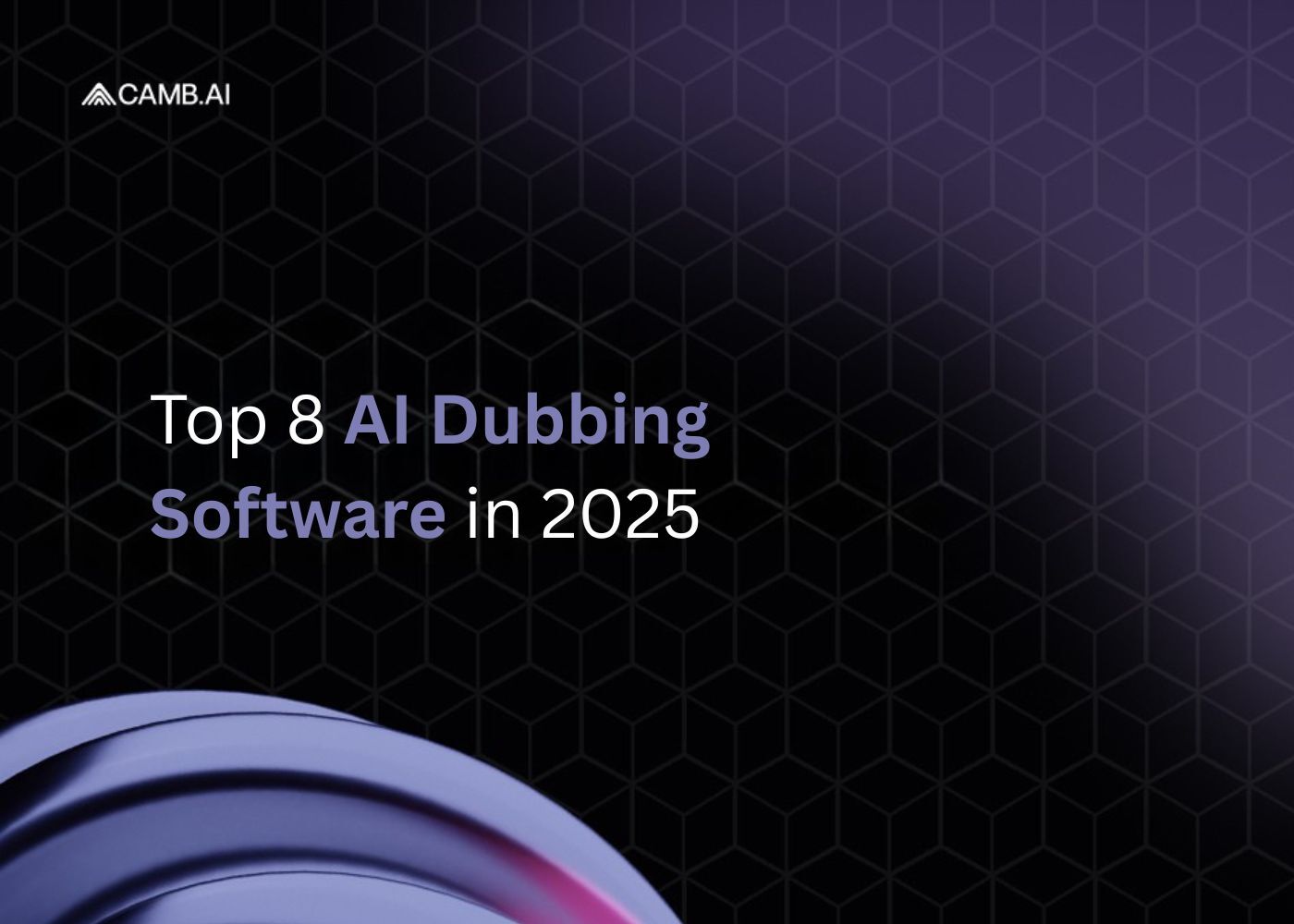文化放送のオリジナル配信プラットフォーム「QloveR」にて、立花慎之介がパーソナリティを務める番組立花慎之介 僕の声で。君の言葉で。が、日本語・英語・中国語に加え、アラビア語、ヒンディー語、フランス語、スペイン語、韓国語の5か国語でも初回配信を開始 — 世界中のファンに“僕の声で、君の言葉で”届けられます。

AI dubbing software automates every step of video localisation — transcription, translation, voice synthesis, and timing — so one upload emerges as fluent content in dozens of languages. Brands, broadcasters, and solo creators now treat it as infrastructure because viewers click away when they can’t watch in their own tongue, and algorithms demote single‑language feeds.
AI dubbing software is a cloud service that turns source‑language speech into target‑language speech while preserving the original speaker’s voice, cadence, and emotion. It does this by chaining four models: speech recognition, neural translation, voice cloning or synthesis, and frame‑accurate audio reinsertion.
Audiences outside English already dominate global watch‑time statistics. Videos in the viewer’s native language drive higher completion, longer sessions, and stronger ad revenue. Manual dubbing once meant weeks of studio time and five‑figure invoices; AI localisation now finishes in hours and costs a fraction, turning multilingual strategy from “nice to have” into a basic growth lever.
Many solutions blend categories, but placing tools in buckets clarifies which aligns with your content velocity and audience expectations.
Premium engines perform every step in‑house; budget tools license third‑party ASR or TTS, which can impact cohesion.
Advantages
Trade‑offs
Studios premiere global versions on the same release date, maximising opening‑weekend revenue without staggered localisation schedules.
Sports Broadcasting
Leagues push live commentary to international audiences in near real time, expanding rights deals and viewership hours.
Education & Ed‑Tech
Course creators translate entire catalogues overnight, boosting enrolments in emerging markets.
Marketing & E‑commerce
Brands repurpose ads, product demos, and how‑to clips for every regional store, improving conversion without re‑shoots.
Corporate Learning
HR and L&D teams auto‑dub compliance or onboarding videos so every employee, regardless of region, receives identical information.
The frontier is hyper‑contextual emotion transfer and bidirectional live conversation. Expect engines to not only translate idioms but adjust joke timing, cultural references, and speaker breathing patterns. In parallel, real‑time voice translation will shrink latency to sub‑500 milliseconds, letting panelists speak and hear each other in their own languages without crosstalk.
CAMB.AI pairs two proprietary models: MARS, a cross‑lingual voice‑cloning engine, and BOLI, a context‑aware translator that adapts slang, sentence order, and regional inflection.
Why it leads
Test your own clip free on Camb DubStudio and hear it back in any language within minutes.
ElevenLabs excels at retaining micro‑emotions in storytelling content. It suits podcasts, audiobooks, and character‑driven videos where subtle tone shifts matter more than lip sync or live delivery. Output limits and smaller language pool keep it focused on niche voice‑first scenarios.
Wavel’s strength is its elastic infrastructure and 100‑language reach. Agencies feed ad libraries or webinar replays via bulk upload; Wavel translates, dubs, and returns annotated transcripts plus subtitles. It lacks lip‑sync precision, making it better for voice‑over‑heavy footage than on‑camera dialogue.
Dubverse layers team roles, review checkpoints, and pronunciation dictionaries over its 60‑language engine. HR or compliance managers can bulk‑dub entire training vaults, flag mistakes, and push final renders to the LMS via API. Real‑time or emotional fidelity is secondary to process governance.
Rather than clone you, Synthesia renders an AI presenter whose mouth matches translated speech. It ships with corporate‑safe avatar styles, brand‑colour backgrounds, and 30 languages. Perfect for onboarding decks, product walkthroughs, or policy videos where a talking head boosts attention.
Maestra bundles transcription, captions, and voiceover into one interface. Its voices sound generic but intelligible, so professors and MOOC providers value speed: upload lecture, choose up to 125 languages, download video, captions, and transcript for LMS posting within the hour.
Resemble lets companies record or upload training data, then outputs a consistent brand voice across IVR systems, chatbots, or commercials. Dubbing is available but the platform’s killer feature is identity control: you license your voice clone for any use, maintain rights, and update tone over time.
Kapwing integrates a lightweight dubbing feature inside its online editor. Creators auto‑translate and overlay new voice tracks on Shorts, Reels, or TikTok videos without leaving the timeline. It’s quick and cheap but lacks nuanced translation or voice realism, so it fits the trend‑speed social loops.
Every day a creator delays localisation, competitors occupy foreign watch lists, claim syndication deals, and build multicultural brand affinity. AI makes the barrier basically time to click “upload.” Viewers won’t wait — so neither should you.
CAMB.AI merges real‑time translation, high‑fidelity cloning, and one‑click workflows. Start with a 60‑second clip, hear yourself fluently in Spanish, Mandarin, or Swahili, and imagine the reach when every video ships in 140 languages.
Launch your first multilingual dub today with CAMB.AI.
Read our story here.
CAMB.AI is the only platform proven in stadium production: its MARS + BOLI stack delivers sub‑second multilingual commentary, used by Major League Soccer for global streams. If you need crowd‑noise ducking and commentator hand‑off in real time, CAMB.AI is the purpose‑built choice.
Yes. Voice‑cloning engines such as CAMB.AI’s MARS or ElevenLabs’ Prime Voice capture pitch, pacing, and emotion from a 2‑ to 5‑second sample, then apply those traits to translated speech. A tech YouTuber, for instance, can sound authentically like themselves when explaining a gadget review in Japanese minutes after posting the English original.
Accuracy depends on custom glossaries and domain data. High‑end tools (CAMB.AI, Dubverse) let you upload vocabulary lists so terms like “myocardial infarction” or “Kubernetes cluster” stay intact. This makes the technology viable for CME courses or developer keynotes without risking mistranslation.
Most premium platforms output captions simultaneously from the same transcript, so you gain accessibility compliance and SEO metadata at no extra effort. Example: an e‑learning firm can publish a Spanish‑dubbed video with auto‑generated Spanish captions, satisfying WCAG guidelines in one pass.
News, insights, and how-tos; find the best of AI speech and localization on CAMB.AI’s blog. Stay tuned with industry leaders.